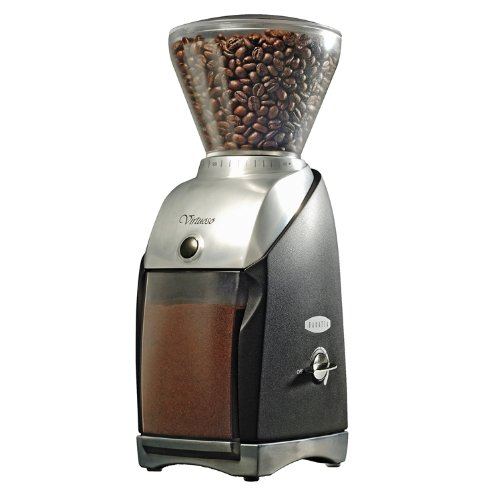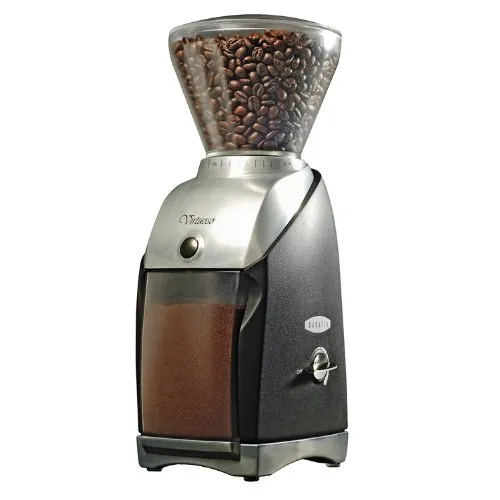
It is well-accepted that whole coffee beans stay fresher longer than already ground coffee, so why doesn’t everyone buy whole bean coffee? It adds one more seemingly time-consuming step to the process: the grinding. Although the old hand-crank grinders were very tedious, today you have many options that fit into our warp-speed lifestyle.
In only a few days after grinding, by exposing more of its surface area to the oxygen around it, coffee loses about 80% of its aromatic qualities that create the flavorful brew we all love. The best time to grind the beans is right before you make the coffee.
The easiest way to do this for drip coffee is the programmable, automatic, all-in-one coffee maker; it takes care of almost everything for you. You dump in the coffee beans and the water, and voila! It does the rest. Set it for the time you want it to start in the morning, then it grinds the coffee, moves it to the drip basket, makes the coffee (many of them even utilize a thermal carafe), and beeps to let you know it is ready. Some of these units require more effort to clean than others, so keep that in mind as you compare features. Ease of use is definitely a characteristic that ranks high on my list of importance.
Maybe you are extremely happy with your current coffee maker and have no desire to search for a new one – no problem! There are many, many stand-alone grinders on the market today. They fall into these two categories: blade grinders and burr grinders. The most common and lower-priced ones are blade grinders. They use a rotating blade, very similar to a food processor, to break down the beans.
The fineness of the grind is determined by the time that you leave the blade running, which will be different depending on the number of beans in the grinder, which in turn makes it difficult to attain a consistent coarseness each time. The positive note of a blade grinder is the low cost and the small size, especially suited for crowded countertops; however, the negatives are that it produces an uneven grind and heats the grinds as it processes them (thereby reducing the quality of the brew).
The other option is a burr grinder. A “burr” is a cast piece of metal that has sharp pointed projections on it, like a coarse file or a rasp. It grinds by compressing the beans through a stationary burr and a rotating burr. Some machines use cone-shaped burrs and others use two flat burrs, but the quality of both is about the same.
The best thing about these is the consistency of the grind. You can set the dial to the exact coarseness desired and the beans are evenly ground when they exit the burrs. This is great for a French press that needs an even, coarse grind. If there are fine particles mixed in with the coarse ones, the fines will go through the metal filter and end up in your cup.
This consistency is also absolutely necessary for an espresso machine. An espresso grind needs to be very fine and even to produce a consistent shot. It takes approximately 23 seconds to brew through an espresso machine, and a variation of 5 seconds, either way, can ruin the shot. For the drip coffee maker, it has the quality of being easy to use.
You don’t need to watch and time the grinder for the coarseness; you just dump the beans in the hopper, set the desired coarseness, and it moves them from the hopper to the tray as it grinds. Also, it does not heat the grounds like the blade grinder, retaining the aromatics and quality of the coffee, and it grinds the same amount of coffee faster than a blade grinder would. The negatives of burr grinders are usually the larger size and the higher cost.

Whichever option you choose, grinding right before brewing will produce a more flavorful brew. Try it out for yourself and see the difference.